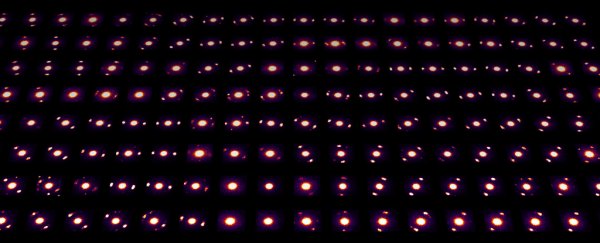Electron microscopes are great at producing high-resolution images of a material's atomic structure - if the material is hard, that is.
Unfortunately, the devices' electron beams can destroy softer materials, so scientists typically rely on X-rays, which can't reach atomic resolution, to image those.
But scientists at the Department of Energy's Lawrence Berkeley National Laboratory have published a pair of studies in the journals Nature Communications and Nature Materials showing how a technique called 4D-STEM allowed them to use electron microscopy to image soft materials without destroying them.
And the images resulting from their research are downright gorgeous.
 (Colin Ophus/Berkeley Lab)
(Colin Ophus/Berkeley Lab)
Double Time
According to a newly published press release, the Nature Communications study focused on the use of 4D-STEM to image bulk metallic glass, which has an unpredictable molecular structure.
This allowed the researchers to identify atomic-scale weak points in the material that could ultimately cause it to fracture under stress.
For the Nature Materials study, meanwhile, the researchers used the 4D-STEM technique to image the molecular ordering in a semiconductor before and after the introduction of a processing additive - research that, according to the press release, could impact the field of solar energy.
"[I]n these studies, we've shown that when 4D-STEM is deployed with our high-speed detectors, customizable algorithms, and powerful electron microscopes, the technique can help scientists map out atomic or molecular regions in any material - even beam-sensitive, soft materials - that weren't possible to see with previous techniques," lead researcher Andrew Minor said in the press release.
This article was originally published by Futurism. Read the original article.
